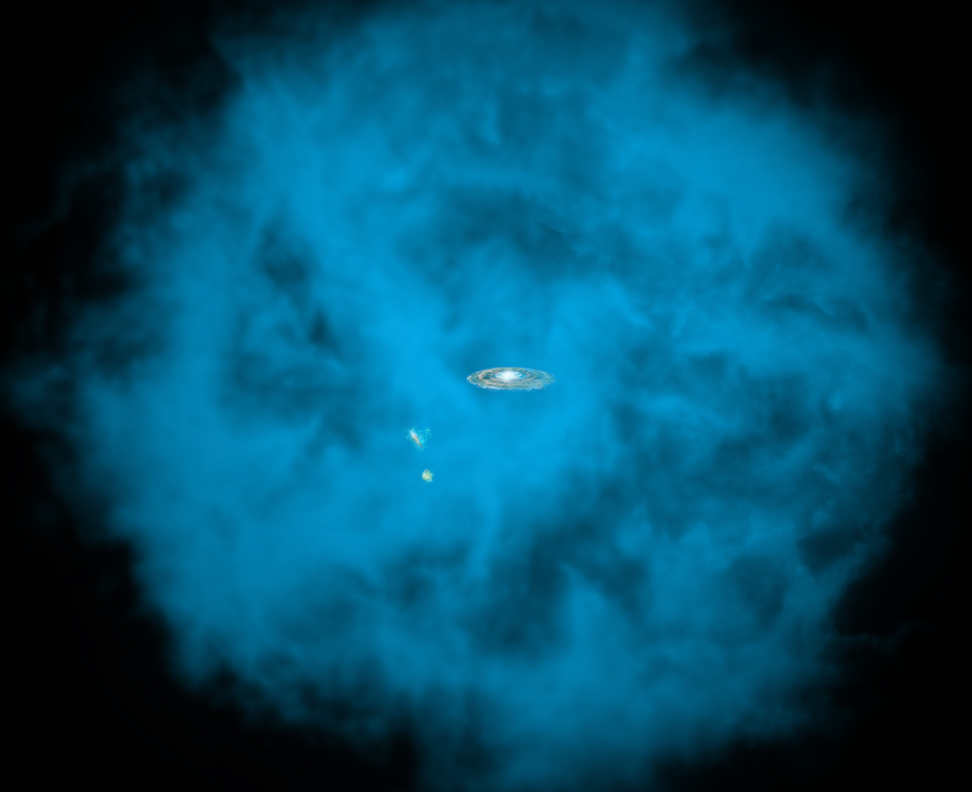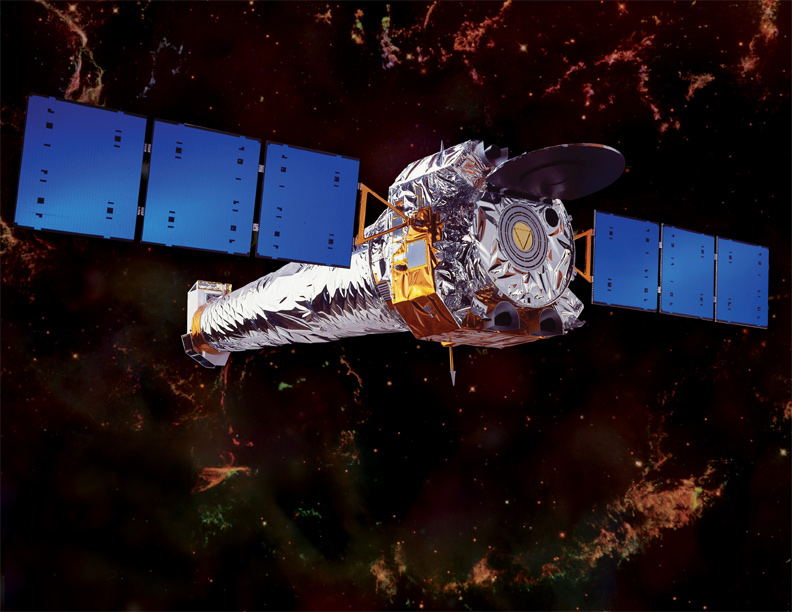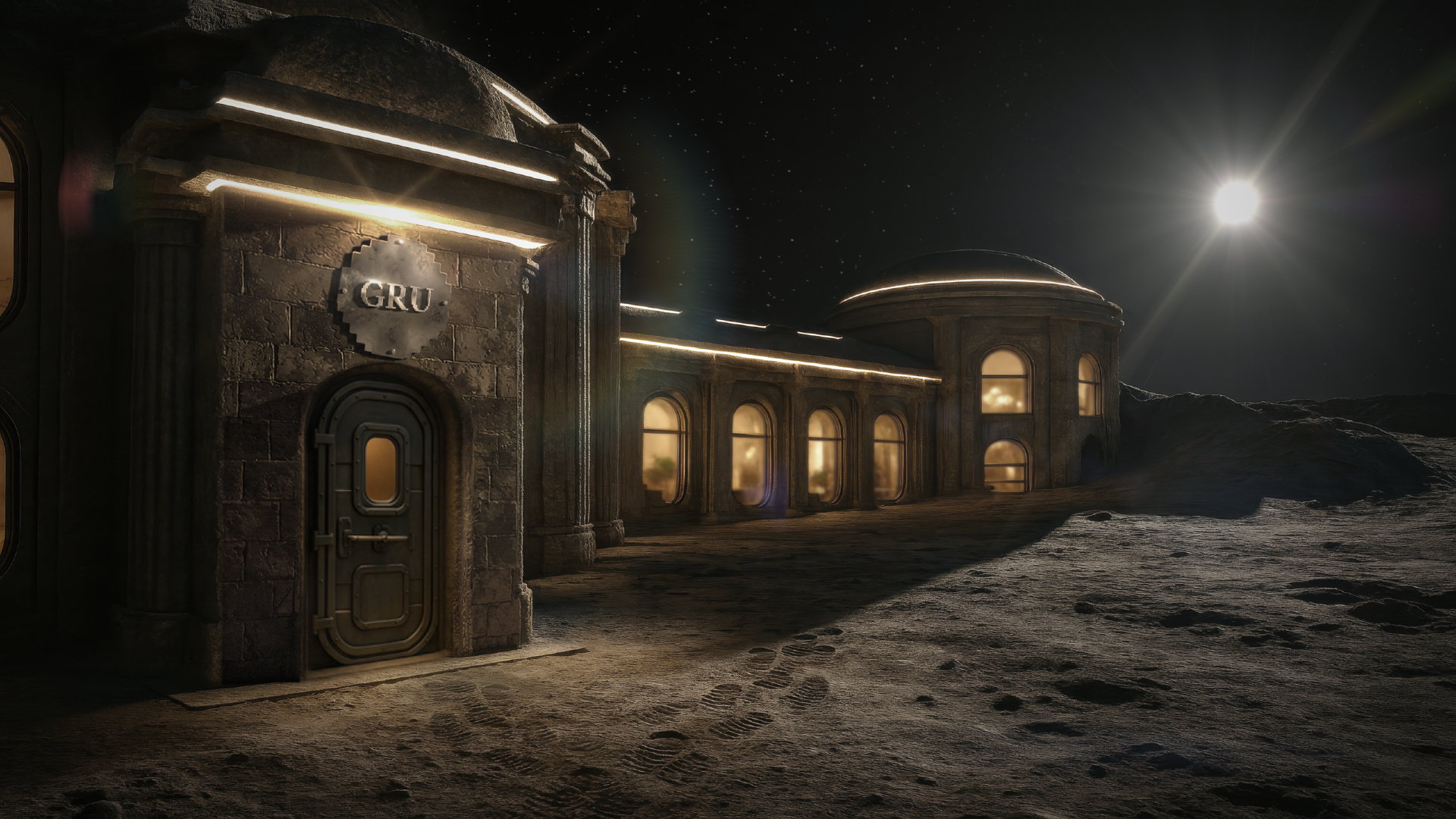Giant Gas Cloud Surrounds Our Milky Way Galaxy

Astronomers have discovered a cloud of gas engulfing our Milky Way galaxy that weighs as much as all the stars inside our galactic home. If the size and mass of this cloud is confirmed, it may solve a longstanding astronomical mystery, experts say.
The cloud, called a halo, appears to be enormous, extending hundreds of thousands of light-years across. Scientists suspect it is composed mainly of hydrogen, with some oxygen and other elements. The halo's temperature, size and mass were estimated using data from NASA's Chandra X-ray Observatory, the European Space Agency's XMM-Newton space observatory and Japan's Suzaku satellite.
Researchers think the mass inside this halo could be the answer to what's called the "missing baryon problem." Baryons are a class of subatomic particles that includes the protons and neutrons that make up the atoms inside stars and galaxies.
Theories of the formation and evolution of the universe predict there should be many more baryons than we see. In fact, the baryons that have been accounted for in our local cosmic neighborhood are only half of those predicted to exist there. [8 Baffling Astronomy Mysteries Today]
Galaxy-shrouding gas haloes, such as the one around the Milky Way, may be the hiding spot for many of these missing baryons.
"Although there are uncertainties, the work by Gupta and colleagues provides the best evidence yet that the galaxy's missing baryons have been hiding in a halo of million-Kelvin gas that envelopes the galaxy," NASA officials wrote in a statement. "The estimated density of this halo is so low that similar halos around other galaxies would have escaped detection."
Initial signs of our galaxy's halo came from the Chandra observatory, which observed eight objects shining brightly in X-ray light, and found that some of this light was being absorbed by charged oxygen atoms around the Milky Way. Scientists determined that this absorbing gas is between 1 million and 2.5 million Kelvin (1.8 million and 4.5 million degrees Fahrenheit) — a few hundred times hotter than the surface of the sun.
Breaking space news, the latest updates on rocket launches, skywatching events and more!
"We know the gas is around the galaxy, and we know how hot it is," Anjali Gupta, lead author of a paper reporting the findings in The Astrophysical Journal, said in a statement. "The big question is, how large is the halo, and how massive is it?"
Follow-up observations by the XMM-Newton and the Suzaku satellite indicate that the gas is as heavy as 10 billion to 60 billion suns.
"Our work shows that, for reasonable values of parameters and with reasonable assumptions, the Chandra observations imply a huge reservoir of hot gas around the Milky Way," said co-author Smita Mathur of Ohio State University in Columbus. "It may extend for a few hundred thousand light-years around the Milky Way or it may extend farther into the surrounding local group of galaxies. Either way, its mass appears to be very large."
Follow SPACE.com on Twitter @Spacedotcom. We're also on Facebook & Google+.

Space.com is the premier source of space exploration, innovation and astronomy news, chronicling (and celebrating) humanity's ongoing expansion across the final frontier. Originally founded in 1999, Space.com is, and always has been, the passion of writers and editors who are space fans and also trained journalists. Our current news team consists of Editor-in-Chief Tariq Malik; Editor Hanneke Weitering, Senior Space Writer Mike Wall; Senior Writer Meghan Bartels; Senior Writer Chelsea Gohd, Senior Writer Tereza Pultarova and Staff Writer Alexander Cox, focusing on e-commerce. Senior Producer Steve Spaleta oversees our space videos, with Diana Whitcroft as our Social Media Editor.

